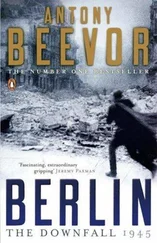4. Sealing off the Invasion Area
The French resistance movement, which had grown up from isolated beginnings in the darkest days of the war, was bound to prove fragmented and unregimented. Bringing so many groups of widely differing political views together had proved a difficult and dangerous task. Many brave men, of whom the most famous was Jean Moulin, had died or risked death in their attempts to coordinate the Resistance. In February 1944, some form of unity was achieved under the Conseil National de la Résistance, and Georges Bidault was elected its leader. Bidault, who later became de Gaulle’s minister of foreign affairs, proved acceptable to both Communists and non-Communists.
In the most general terms, French politics in 1944 split three ways, with people identified by their opponents as Pétainist, Communist or Gaullist. This is not, of course, how they would necessarily have seen themselves. Large parts of the Resistance worked with de Gaulle, without necessarily being Gaullist. The ORA, the Organisation de Résistance de l’Armée, took de Gaulle’s orders, but its leaders never quite shed their suspicions of him. Led by General Revers and other officers, the ORA emerged from the ruins of Vichy’s Armistice army, which had been disbanded by the Germans after they marched into the unoccupied zone in November 1942. The Communists regarded them as no better than turncoat Pétainists infiltrating the Resistance. Yet the Communists, working behind the scenes, were the most proficient infiltrators of all, using their classic tactics of ‘entryism’. Many tricks were used to get their representatives, often in a disguised role, on to the key Resistance committees. They would then take them over from the inside, while leaving an appearance of political unity on the surface.
The French Communist Party had found itself in an indefensible position during the Nazi-Soviet pact. But since Germany’s invasion of the Soviet Union, radical and determined young Frenchmen and women became enthusiastic recruits. The immense sacrifices of the Red Army and partisans had proved a powerful inspiration which owed little to the Stalinism of the pre-war period. Some in the armed wing of the French Communist Party, the FTP (Francs-tireurs et Partisans), believed that the fight against Vichy and the German occupation should become a political insurrection as well as a battle of national liberation. Untrained in Stalinist discipline and lacking instruction from Moscow, they had no idea that the last thing the Kremlin wanted was a revolution in France breaking out behind the Allied front lines. Until Germany was finally defeated, Stalin needed all the American assistance he could get in the form of Lend-Lease trucks, food and steel. In addition, his worst fear was that the western Allies might be tempted to make a separate peace with Germany. He certainly did not want any trouble from local Communists which might give them an excuse.
French Communists in the Resistance knew nothing of this, and not just because of communication difficulties. In Moscow, the International Section of the Central Committee, which had replaced the Comintern, received little guidance from above. Stalin had washed his hands of France. It appears that he could not forgive her collapse in 1940, which, contrary to all his calculations, had left the Soviet Union suddenly vulnerable to the Wehrmacht.
The Special Operations Executive in London, which was in radio contact with 137 active stations, estimated that by the spring of 1944 the strength of the Resistance approached a total of 350,000 members. Around 100,000 may have had serviceable weapons, yet only 10,000 had ammunition for more than a single day of combat. The main contribution which the Resistance offered to the success of Overlord lay not in guerrilla action, but in intelligence and sabotage, contributing to the isolation of Normandy from the rest of France.
Résistance Fer, the organization of railwaymen, played a considerable part in both these fields. The strength of divisions could be estimated by the number of trains used to move them. For example, the 12th SS Panzer-Division Hitler Jugend was known to be close to maximum strength because the railwaymen, known as ‘ cheminots ’, had reported that eighty-four trains were needed. A ‘Plan Vert’, or Plan Green, covered sabotage. Working with other Resistance groups, the French cheminots helped derail trains in tunnels, from where it was difficult to extract them. Heavy lifting cranes became a priority target for both sabotage and air attack. Engines were wrecked in marshalling yards and railway tracks constantly blown up.
In Burgundy and eastern France up to the German border, rail traffic came to a halt. Altogether thirty-seven railway lines were cut around Dijon just before the invasion. French railwaymen suffered heavy German reprisals. Several hundred were executed and another 3,000 deported to German camps. Engine drivers also faced the perpetual danger of attacks by Allied fighter-bombers. Typhoon pilots delighted in targeting trains with rockets and cannon to see the engines explode in a cloud of steam. On a less dramatic level, the cheminots became expert in delaying German troop trains, often by sending them down the wrong line. The Germans had been forced to bring in 2,500 of their own railwaymen, but the sabotage continued.
Apart from the obvious reasons for preventing the movement of German troops and supplies by rail, there was an added advantage in forcing movement on to the roads. Tank tracks had only a limited mileage, and as a result of the American Eighth Air Force bombing oil plants and refineries, the Wehrmacht was desperately short of fuel. Their lack of rubber for tyres also provided another very easy target for Resistance groups. Tacks and glass scattered on roads used by supply vehicles proved very effective in hampering road traffic, which was the point of ‘Plan Tortue’, or Plan Tortoise.
‘Plan Violet’ was assigned to members of the French telephone and telecommunications organization, the PTT. This concentrated on cutting the underground cables which the Germans used. Although they did not know it, this had the added advantage of forcing the Germans to use radio communications, which could then be decoded through Ultra. ‘Plan Bleu’, meanwhile, focused on sabotaging electric power lines.
In the Norman départements of Calvados and La Manche, the Resistance was not a major force. The most militarily active of the small networks was the Surcouf group at Pont-Audemer. There were some 200 members in and around Bayeux, as well as some fishermen in the little ports along the coast. Further inland, where the conditions were more favourable, weapons were hidden ready for the moment. In the Orne, which offered the concealment of forests, the Resistance could call on 1,800 men and women, of whom a third possessed weapons.
The small number of action groups in Calvados did not mean a lack of assistance to the Allies. A stream of information had been passed back to London. German divisions in the region were identified in laundries by the numbers inscribed on the collars of their tunics. Many of the details which enabled the British to seize the bridge over the Orne at Bénouville in a highly successful glider operation came from members of the Resistance. And two men who worked in the Organisation Todt offices, which supervised the construction of coastal defences, had copied plans and maps. One of them, Monsieur Brunet, was caught and condemned todeath. Minefields, both real andfake, were identified, and attempts were made to estimate the calibre of the guns covering the beaches. This was difficult, since workers were evacuated before the coastal artillery was installed, but the depth of the zone forbidden to fishing craft during firing practice gave a useful indication.
Читать дальше











